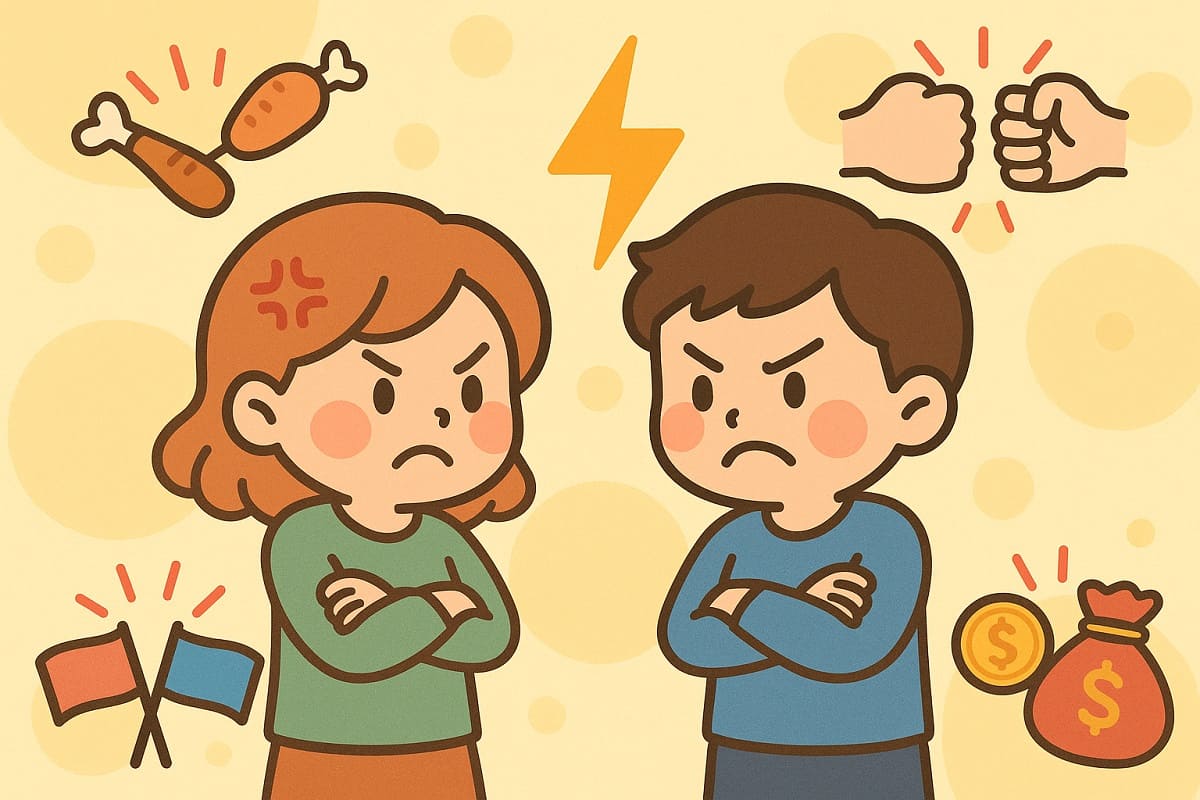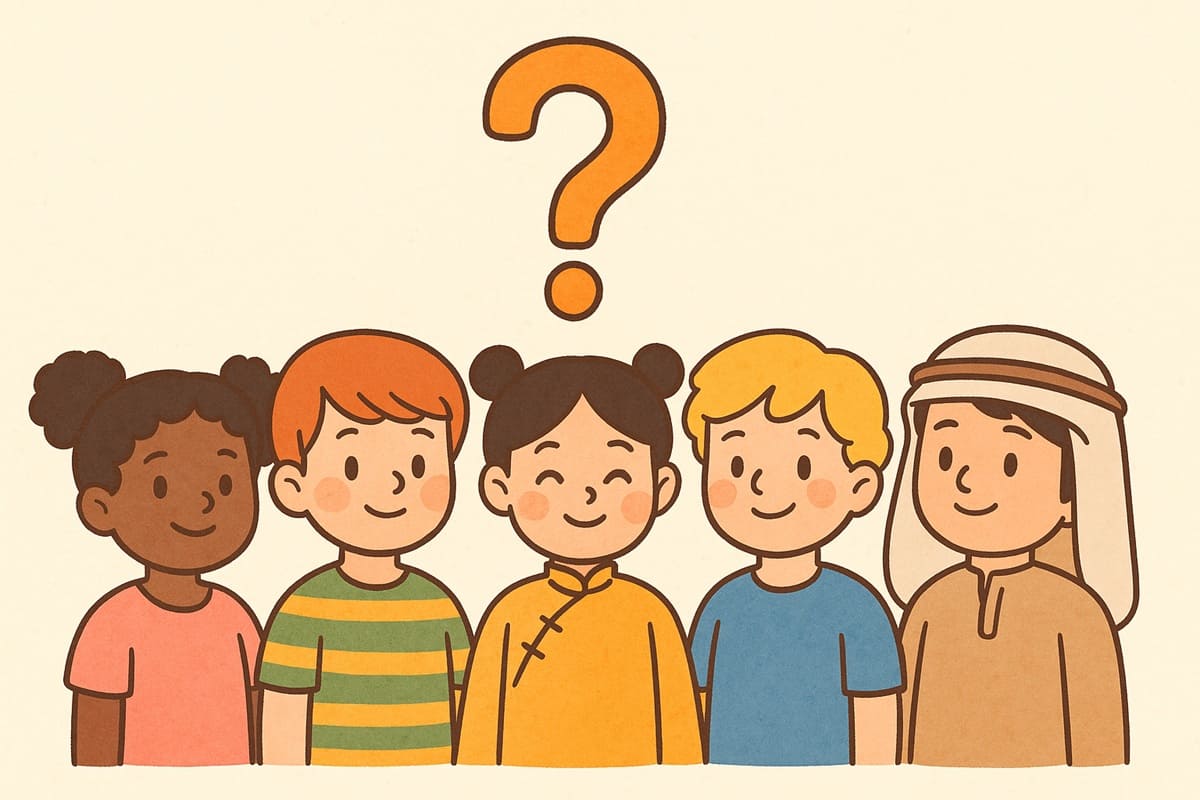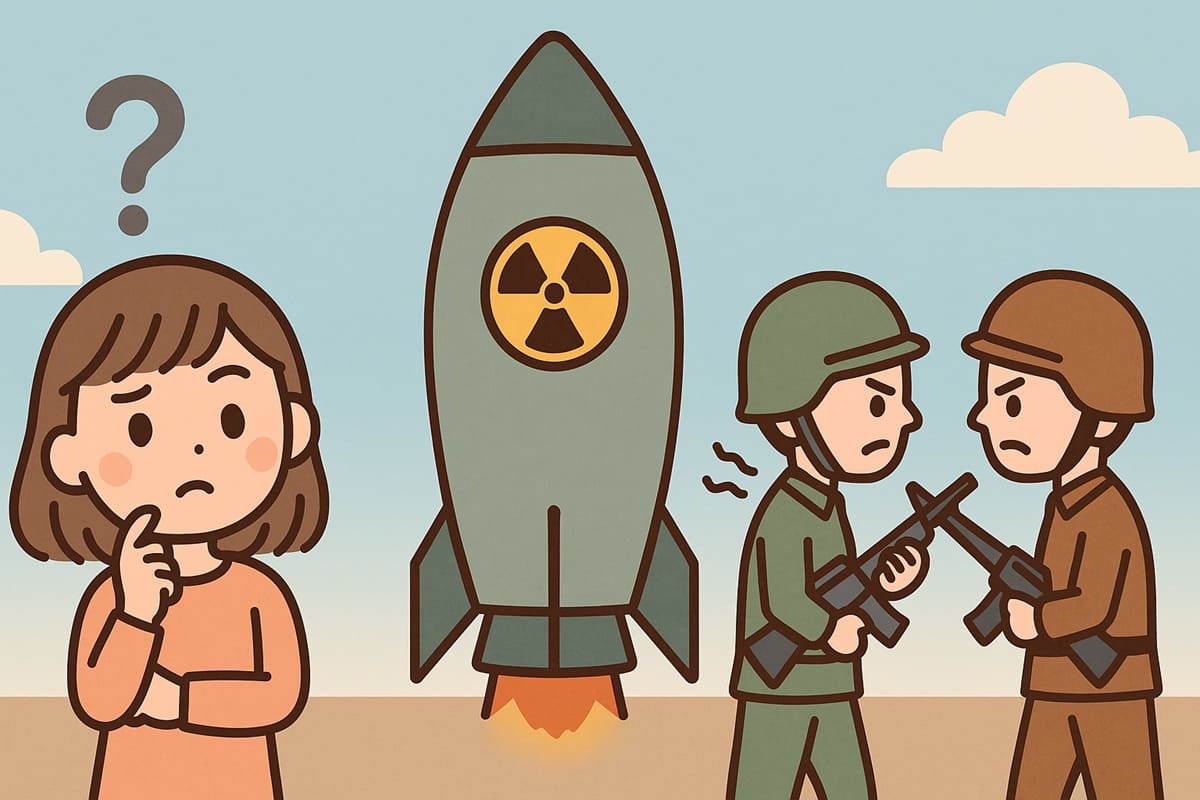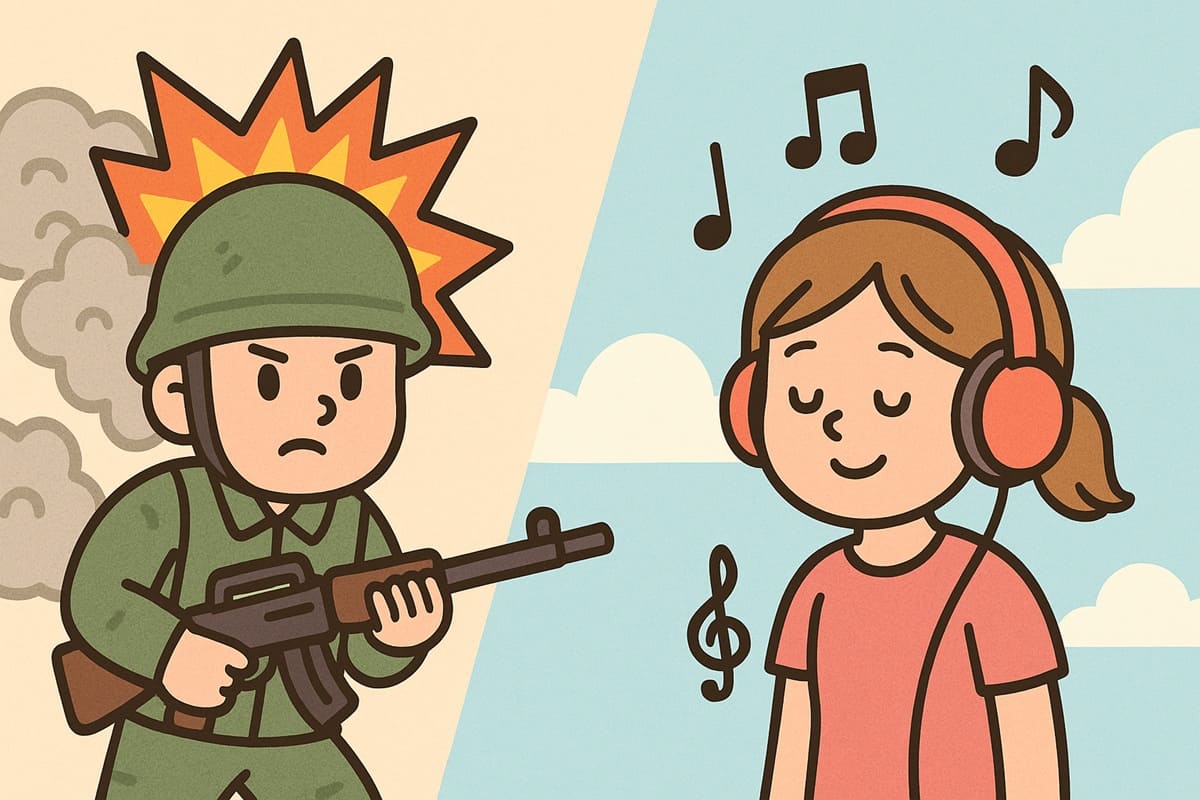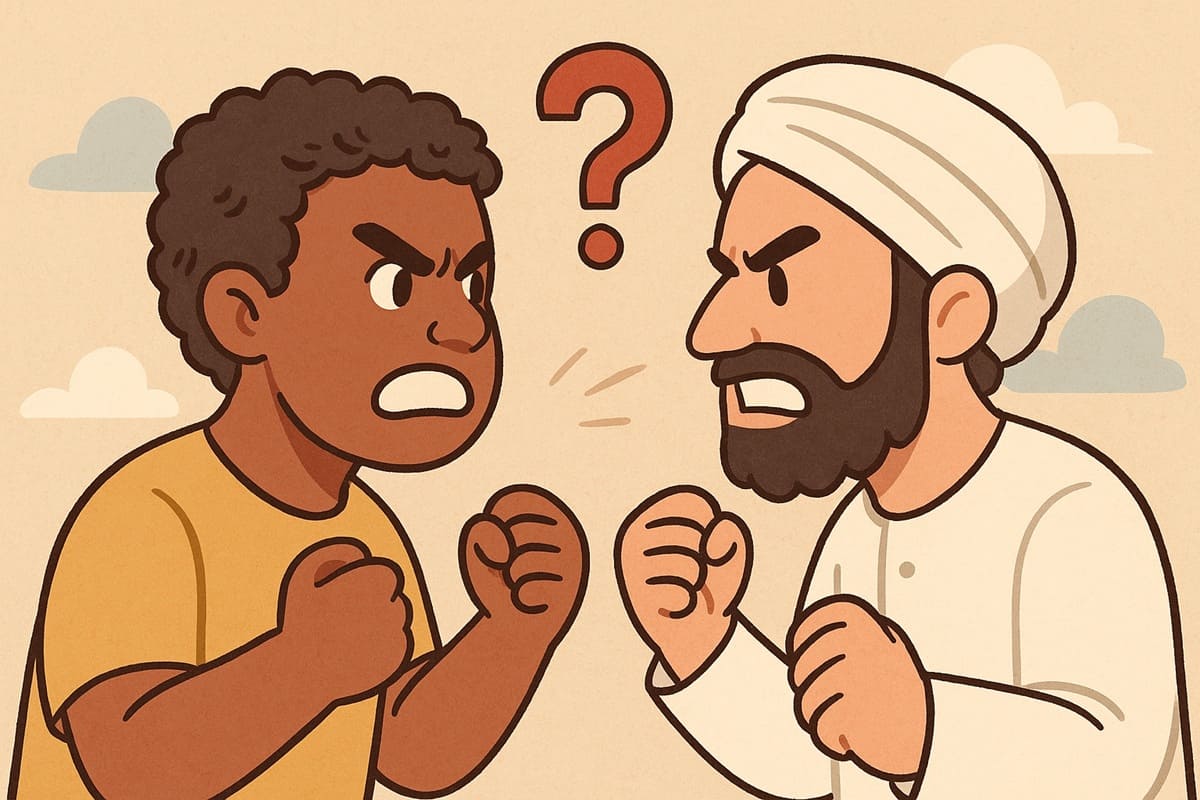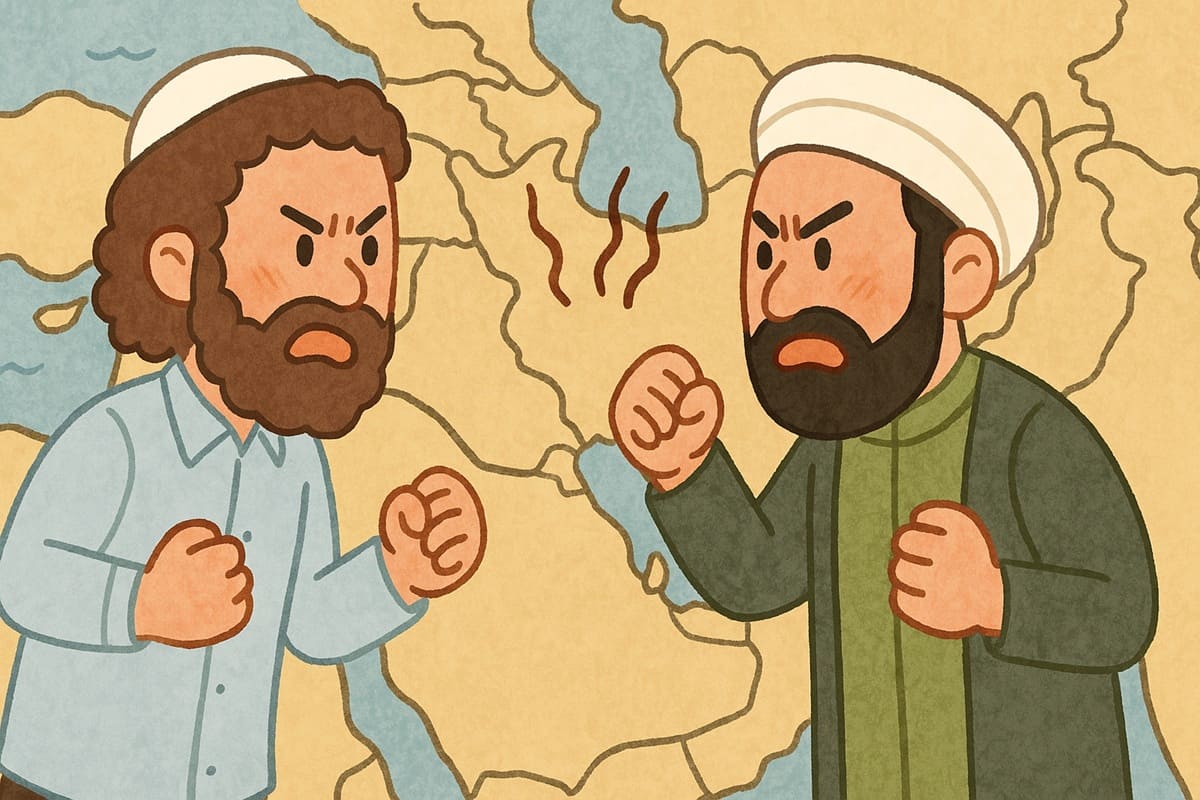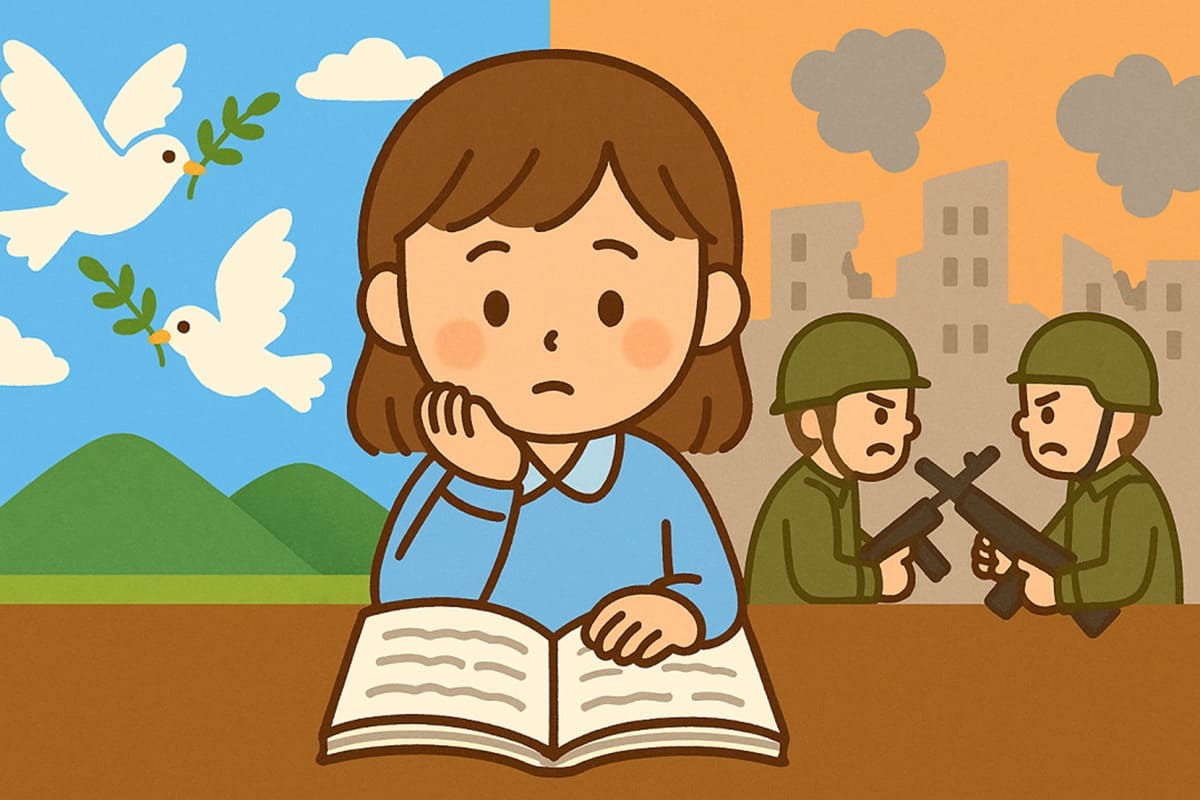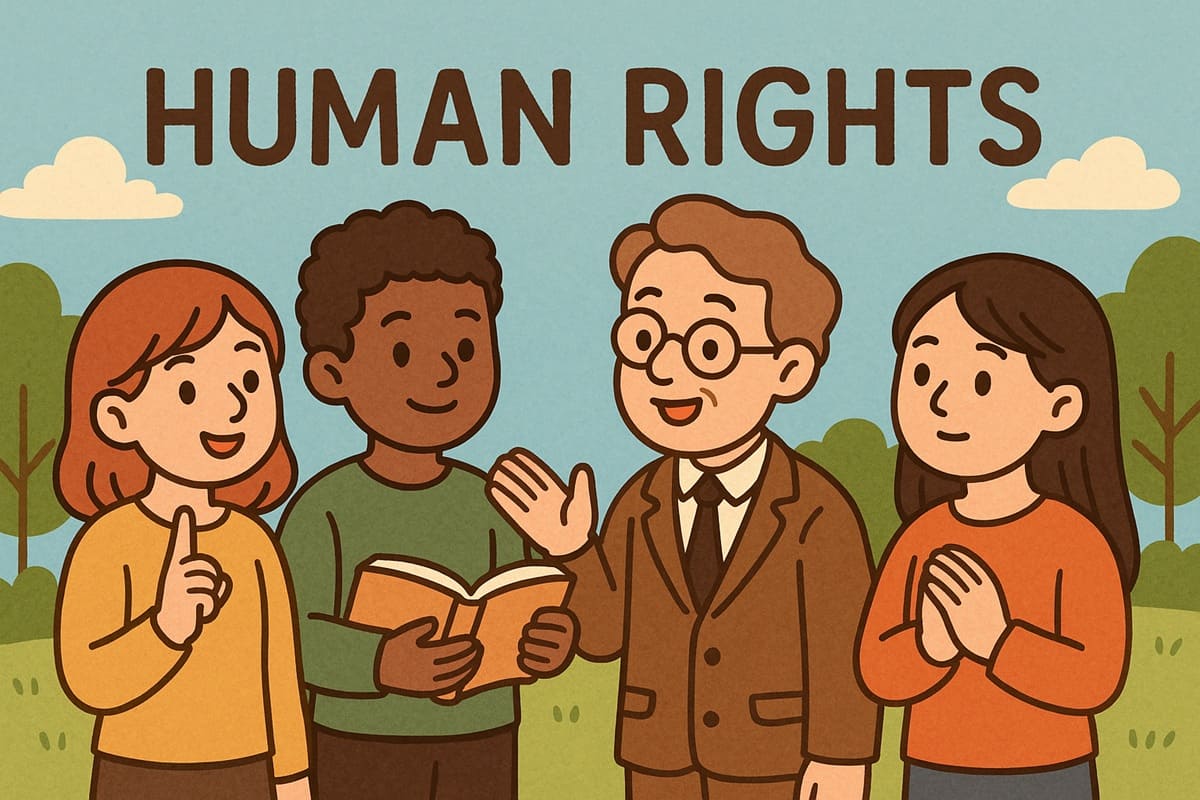Who Is Fighting on the Battlefield? Understanding the Difference Between Conscription and Voluntary Military Service
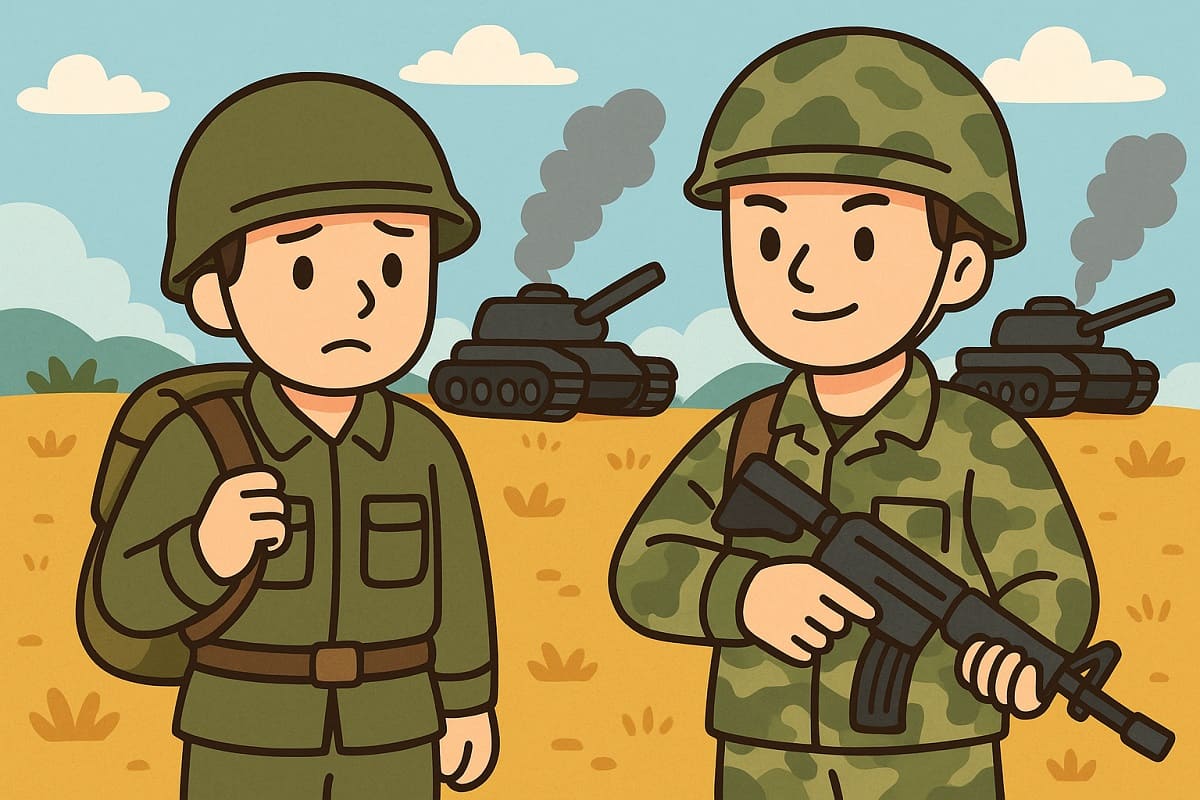
“Who decides who goes to war?”
“Do people really still go to war in this day and age?”
Have you ever wondered about these questions?
Even today, there are regions in the world where wars and armed conflicts continue. And in those places, there is always someone who is doing the fighting. That “someone” is not a special or different kind of person. Most of the time, they are ordinary young people—just like us.
In this article, we’ll explore the question, “Who is fighting on the battlefield?” by explaining the differences between two military service systems: conscription and voluntary military service, and looking at the kinds of people each system sends to war.
What’s the Difference Between Conscription and Voluntary Military Service?
When it comes to joining the military, there are two major systems:
● Conscription
Conscription is a system in which the government legally requires citizens of a certain age to serve in the military. Regardless of their personal will, if the government calls them, they must join the military.
For example, in South Korea, all adult men are required to serve about one and a half to two years in the military. This is because of the ongoing military tension with North Korea, and the country needs many soldiers for national defense.
In Israel, both men and women are subject to mandatory military service. This policy stems from Israel’s unstable location in the Middle East and the belief that every citizen must help defend the nation.
● Voluntary Military Service
Voluntary military service means that only people who choose to join the military do so. Countries like Japan and the United States follow this system. In other words, whether you go to war or not is, in principle, up to you.
At first glance, voluntary military service may seem more free and fair. But in reality, this system has its own hidden pitfalls.
Is It Really a Choice? The “Invisible Pressure” Behind Voluntary Military Service
In countries with voluntary military systems, it may look like only those who want to join the military do so. But in reality, many young people enlist for reasons like:
- Economic hardship
- Inability to afford college
- Need for stable income
In the United States, for instance, joining the military can give you access to financial aid for tuition, as well as support for healthcare and housing. Because of this, many young people from low-income families or immigrant backgrounds choose to enlist, believing that the military can provide a better future.
So even under a voluntary system, many people go to the battlefield not entirely by choice, but out of economic necessity. This phenomenon is sometimes referred to as “economic conscription.”
Not Everyone Goes to War Willingly
You might imagine that soldiers are all people who want to fight. But that’s not always the case.
Take, for example, Lieutenant Ehren Watada of the U.S. Army. He believed that the Iraq War was unjust and refused the order to deploy. He stood by his conscience, even though it meant facing a military trial.
There are also many cases where soldiers, after experiencing the battlefield, suffer emotional stress or fear and decide they never want to go back. In the Iraq War, thousands of soldiers reportedly deserted and fled from the battlefield.
In Russia, after the 2022 invasion of Ukraine, many young men who were conscripted didn’t want to fight. Some of them, lacking proper training and low in morale, reportedly abandoned their weapons or surrendered to the Ukrainian side.
War is often portrayed as something noble and brave—“fighting for justice.” But in reality, many young people are placed on the battlefield while battling fear and inner conflict.
Who Fights—and Who Doesn’t?
In a conscription system, it is supposed to be “equal for all.” But in practice, the children of politicians and celebrities often receive special treatment or exemptions due to health reasons and other factors.
In a voluntary system, those from wealthy or well-educated backgrounds rarely join the military. Instead, the military tends to be made up of people from poorer backgrounds, minority groups, and immigrants. In the U.S., the percentage of Hispanic, Black, and immigrant soldiers has been increasing year by year.
So the question “Who fights?” is also the question “Who gets to avoid fighting?”
Those with money and social power can live their lives with war as something distant and unrelated. Meanwhile, people in vulnerable positions are the ones being sent to the front lines.
Conclusion: The Ones Fighting Are Ordinary Young People
Wars may be started by governments or military leaders, but the people who actually go to the battlefield and risk their lives are almost always ordinary citizens—especially young people.
Whether under conscription or voluntary military service, it is often those in weaker positions in society who end up on the front lines. This is a reality we must not overlook.
The next time you see news about war, remember: the people fighting may not be strangers far away. They might be just like you.
Having that kind of imagination could be the first step toward thinking seriously about peace.
Main References
- Ichikawa, H. (2007). Military personnel and civil disobedience: Selective conscientious objection and desertion. Peace Science, 29, 47–70.
- Ito, K. (2020). Changes in public perception of conscription in South Korea and the future of “Defense Reform 2.0.” International Information Network IINA.
- Miki, Y. (2024). Global overview of conscription systems. Global News View.
- Marzia, A. (2022). How counter-recruiters take on the U.S. military. YES! Magazine.
- Amnesty International. (2023). Israel: Conscientious objector Yuval Dag sentenced to prison.
